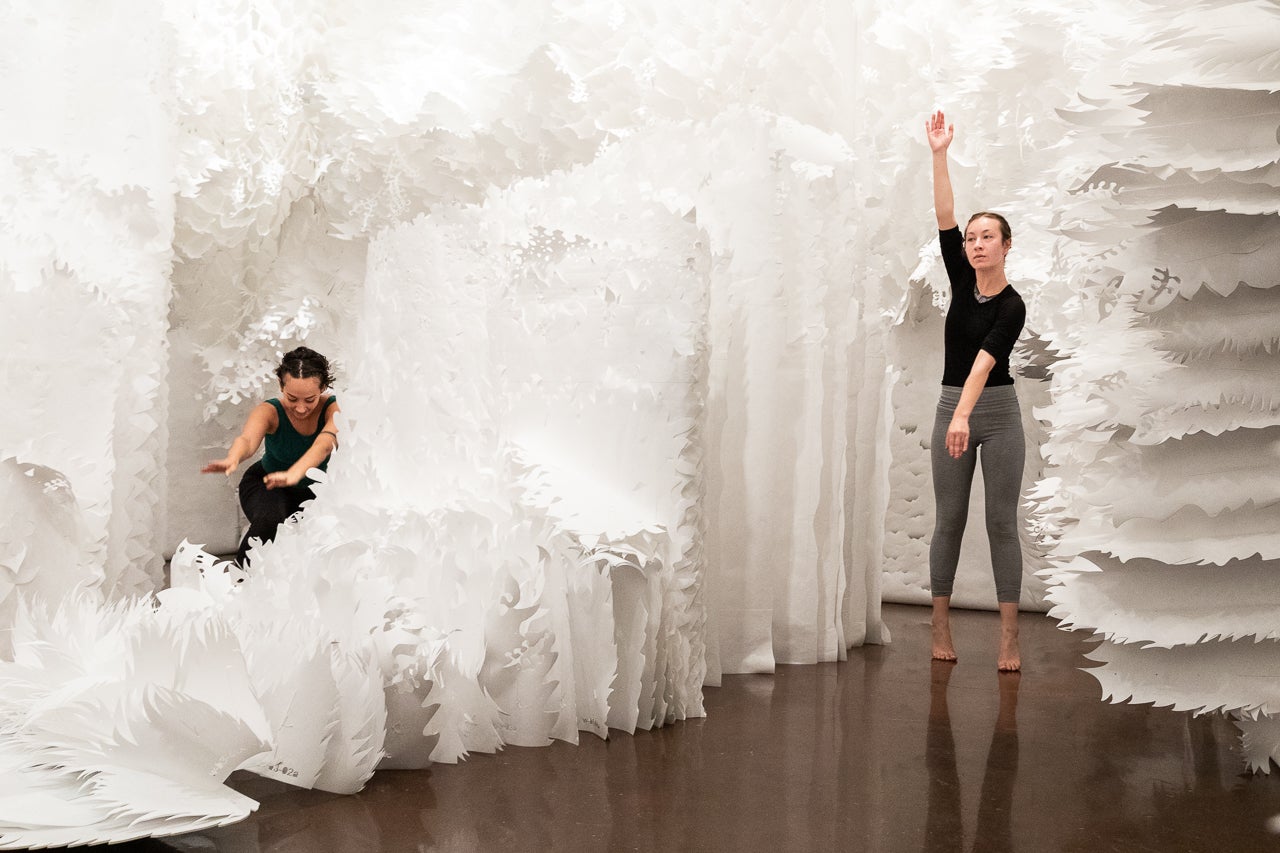What is the impact of merging two art forms? Is the effect synergistic? Does it deepen the meaning of one or the other – or both – for the viewer? Those questions and others will come into sharp focus on Tuesday, July 2, 2019, and Saturday, July 6, 2019, when dance faculty member and choreographer Kristin Alexander presents a performance set in the Halsey Institute of Contemporary Art within its current exhibition “Cry Joy Park — Gardens of Dark and Light.”
Alexander, who is creating the site-specific performance with dance majors from the College and several dancers from her own group Annex Dance Company, says she’s both humbled and inspired by this project.
“I began talking about this with Jennifer Wen Ma [the artist who created ‘Cry Joy Park’] almost a year ago,” Alexander explains. “Personally, I love creating and representing movement in a nontraditional space. There’s something powerful about taking an audience out of a seated moment in a theater and transporting them to a place where they wouldn’t ordinarily see dance. I think that allows the connection with the audience to reach new levels.”
In addition to that, Alexander says the subjects that Ma and the Halsey’s directors are attempting to highlight with “Cry Joy Park” – principally the juxtaposition of utopia and dystopia – are import for us all to consider.
The performances, which take place July 2 at 2 p.m. and July 6 at 1 p.m., are free and open to the public. Below are scenes from a recent rehearsal, along with comments from Alexander and two of the dancers who will perform – Aimee Gwynne and CofC student Allison Provost.

“I love hearing Jennifer (Wen Ma) talk about her work and why it’s important, and how it’s relevant to this particular city. All of that influences what’s happening with the choreography we’ve created for this performance,” says Alexander.

“Most people are going to come to the performance with an impassioned position on the topic. I also encourage people who don’t know how to start these kinds of conversations to come and allow this exhibit to be one of those starters,” says Alexander.
“For me, the public should know that it’s important to show up. Show up to a performance like ours. Show up to this art installation. Doing that might not feel significant to them, but it can start conversations. So, it’s important to show up and be present,” says Provost.

“The surroundings we’re in, with this piece all around us, they’re inspiring. Since the work is very wide and tall and is taking up space, that almost feels like it’s giving me permission to take up space and see how I can fit into it and become part of this space,” says Gwynne.
“To have both set choreography and improvisation involved in the performance is important because there will be something unique about a particular moment and the connections it prompts. That speaks a lot to what this exhibit is about and the topic that we’re investigating as well,” says Alexander.
All photos by Heather Moran






